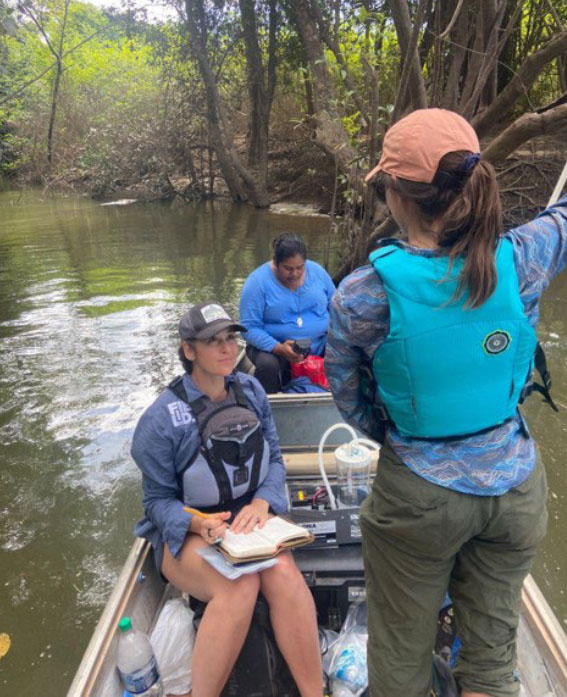A collaborative effort is underway in the Rupununi region to conduct a survey of the pink river dolphin in an effort to learn more about this endangered species.
A release from the World Wildlife Fund (WWF) on Tuesday announced that the Manari Ranch, Field Museum Chicago, and local field biologists, supported by the World Wildlife Fund (WWF), have conducted the first environmental DNA (eDNA) survey in the Rupununi Region to assess the extent of the pink river dolphin in southern Guyana.
It explained that this first-of-a-kind research is a “crucial” undertaking that will provide valuable insight into the behaviour and distribution of this species in Guyana.
Further, by studying the pink river dolphin, experts and local communities will gain a deeper understanding of its ecological role, habitat requirements, and potential threats to its survival, considering its restricted distribution in the Amazon region.
The research which began in January, was led by Guyanese field biologist, Indranee Roopsind; conservationist, Lissa Orella; and local experts Don Melville and Julian Orella. The team collaborated with conservation biologist, Dr Lesley de Souza, of the Field Museum Chicago, who is described as a world-leading expert on aquatic species in the Amazon basin, and Dr Sophie Picq, an expert on tropical fishes and eDNA sampling, to incorporate eDNA sampling for this project. Local community representatives participated in the monitoring activities, with the support of WWF, South American River Dolphin Initiative (SARDI), and other partner organisations.
Additionally, the release noted, the findings of this research can help inform conservation efforts and management strategies to ensure the long-term sustainability of this species and its ecosystem. And through collaboration and data sharing, this research will also facilitate greater awareness and appreciation of the unique and diverse wildlife in the Rupununi Region.
During the monitoring activities, researchers observed several pods of dolphins in the waterways of the Rupununi. Environmental DNA (eDNA) samples were collected in the dry season from 20 sites, with the presence of the pink river dolphin detected at 12 sites. The study also saw the presence of 274 other taxa, representing a diverse range of species in the area. Follow-up rainy season eDNA samples are currently being analysed. The available data on the species, including extensive field observations, genetic analysis, and behavioural studies, will be incorporated into the comprehensive SARDI dashboard, which will serve as a central repository, complementing the data on the species from other range countries.
According to the release, the river dolphin is one of the species that acts as an ecological link, connecting Guyana to the Amazon basin via the “globally renowned” Rupununi wetlands. The wetlands are critical for the survival of the surrounding communities, sustain vast ecosystems, and serve as migration channels for the river dolphins moving from the Amazon to the Rupununi during the wet seasons. It was also discovered that river dolphins are present in the Rupununi region throughout their lifecycle and even during the dry season. However, it was acknowledged that more research is needed to determine if dolphins reside in the area throughout the year.
Roopsind, noted, “The year-round presence of these dolphins in the Rupununi region has important implications for the conservation and management of this area, as it highlights the need for further study and protection of this valuable ecosystem, which can contribute to the development of effective conservation strategies aimed at preserving the unique biodiversity of the Rupununi region.”
And WWF-Guianas Country Manager Aiesha Williams, spoke about partnering with the local communities, “Through partnerships with local communities and leveraging the power of science, we can make better progress in uncovering new insights into the lives of these fascinating animals and their vital role in the delicate ecosystems of the Rupununi region”.
In addition to the research on river dolphins, a social survey was conducted among residents in Lethem. It aimed at evaluating the extent of their knowledge and attitudes towards river dolphins, including aspects such as their traditional beliefs, cultural values, and level of awareness about the species.
The preliminary findings suggest that the younger generation has a limited understanding and connection with river dolphins, highlighting the need for increased awareness and education among the younger generation to foster a greater appreciation and conservation of river dolphins, the release added.





